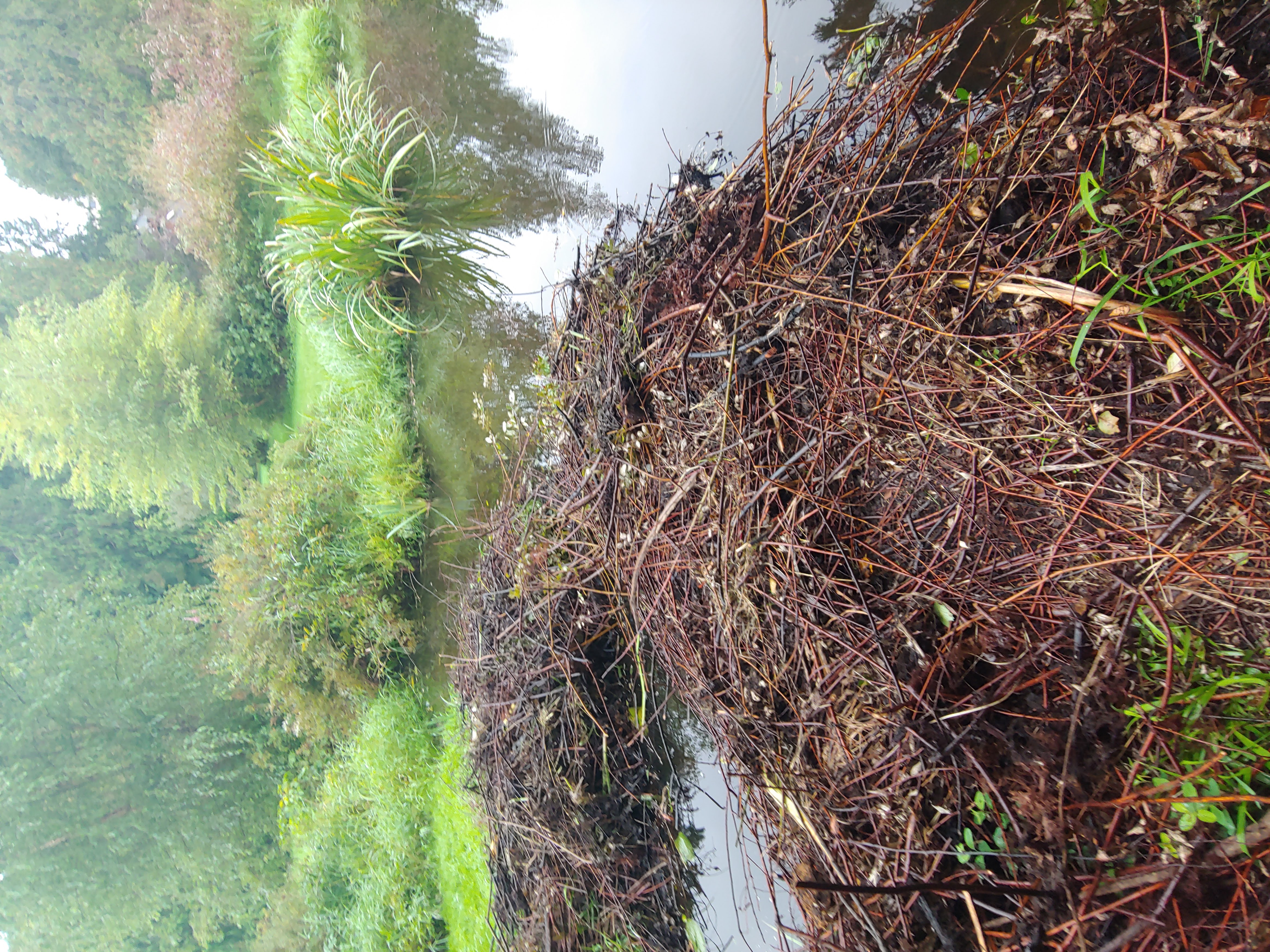
A beaver sits in a shallow riverbank. Photo by the National Park Service
After near elimination by hunters and fur-trappers in the 1800s, beavers are slowly making a comeback in Washington. This is good news because beavers provide many ecological benefits.
Beavers create their homes near rivers and streams across the state, and sometimes their habitats include human residential communities that can create conflicts. Fortunately, there are organizations like the Snohomish Conservation District that are helping humans coexist with these rodents of unusual size.
In 2020, we awarded the Snohomish Conservation District $510,726 to increase community-based water storage in the Snohomish River watershed. One of the ways to improve water storage is allowing beavers to live in their natural habitat and build dams that create beneficial ponds.
Beavers and their benefits
Beaver dam on Stitch Lake, Lake Stevens. Photo by the Snohomish Conservation District.
Beaver ponds allow sediment to settle at the bottom while helpful bacterial break down pollutants in the sediment, improving water quality. Beaver dams also help improve streamflows by ensuring there is a steady flow of water throughout the year. The beaver ponds also give that water time to flow downward to recharge groundwater, which can be helpful during drought months. Furthermore, during rain events, the ponds fill up and help mitigate flooding.
There are multiple benefits to living alongside beavers as they create healthy and diverse habitats that benefit local water supply.
How do we live with beavers?
Snohomish Conservation District staff installing a pond leveler to reduce flooding caused by a beaver dam. Photo by the Snohomish Conservation District.
When beavers create dams near residential communities, it can create some challenges for humans, like flooding or loss of trees. Fortunately, there are solutions that can help us coexist with beavers. The Snohomish Conservation District uses simple and effective tools to help landowners manage their properties when beavers are present.
One such tool is a pond leveler. Pond levelers are flow devices that control flooding from beaver dams. Another simple tool is using fencing to protect trees from gnawing beavers. Relocating beavers is also an option that can benefit the ecosystem while reducing conflict with people.
“Our goal is to keep beavers on a landscape for their ecological benefits and encourage people to live with them,” said Elyssa Kerr, habitat restoration project manager for the Snohomish Conservation District. “Beavers are part of the solution to help improve watersheds, along with projects that restore wetlands and increase water storage.”
The Snohomish Conservation District also collaborates with Snohomish County, the Tulalip Tribes, and local nonprofits to raise community awareness about co-existing with beavers and sharing resources. The goal is to stop lethal removal of beavers and focus on solutions to manage living with beavers.
Ultimately, we need to re-think our relationship with beavers and become comfortable with how they change the landscape. Living harmoniously with beavers can help improve streamflows and protect endangered salmon.
Streamflow restoration competitive grants
Our streamflow restoration competitive grants fund projects that improve rivers and streams in Washington. We support the work of state and local agencies, tribal governments, and non-profit organizations throughout the state. To learn more, visit our Streamflow Grant webpage.
The Washington Department of Fish and Wildlife created this video describing the ecological benefits beavers bring.



